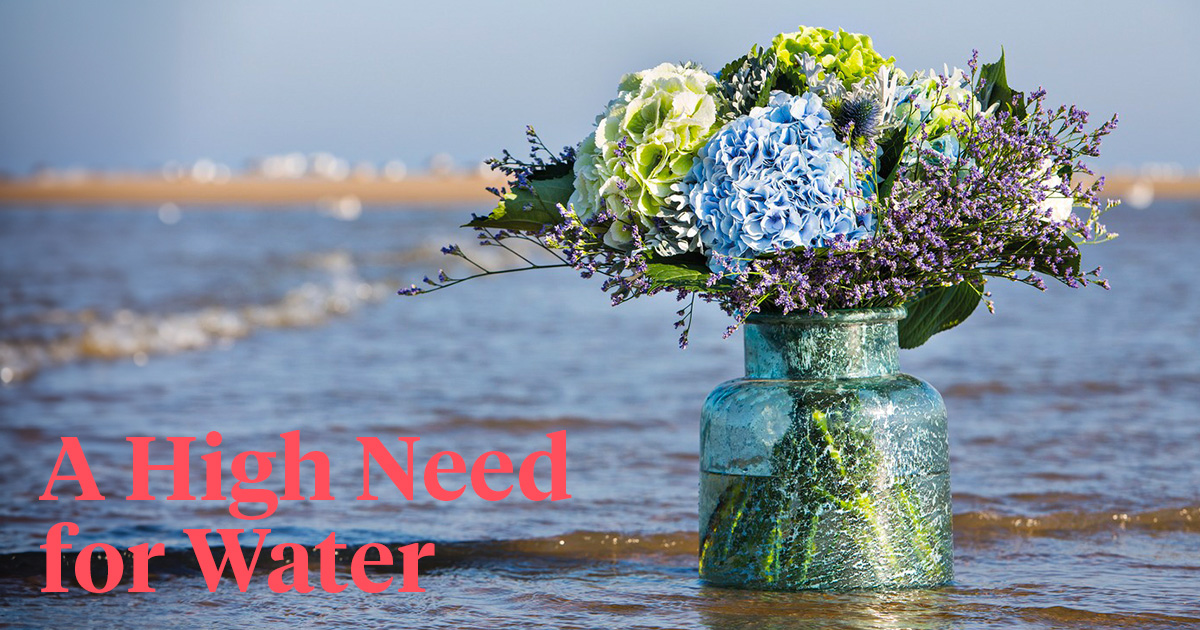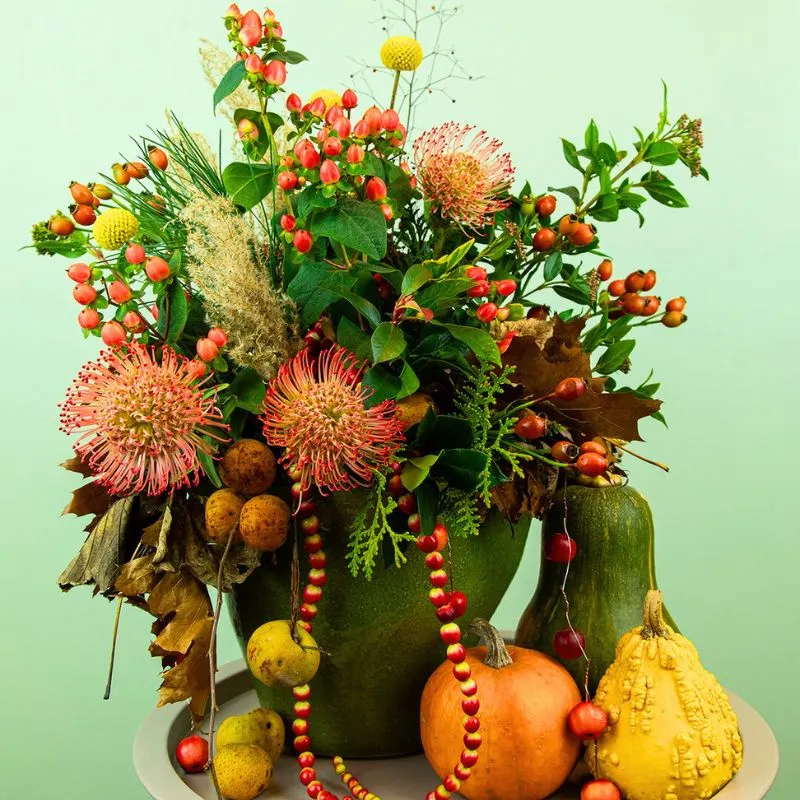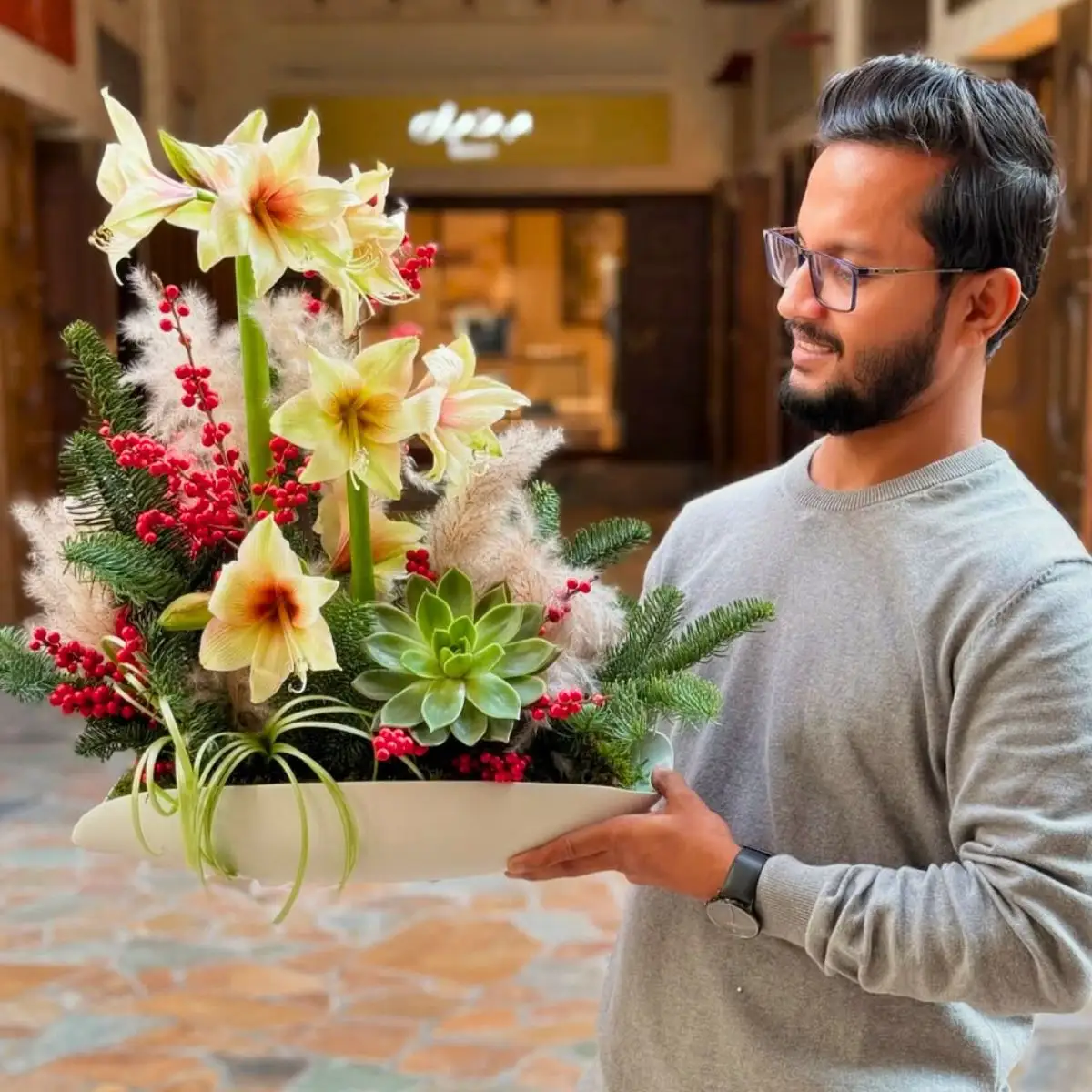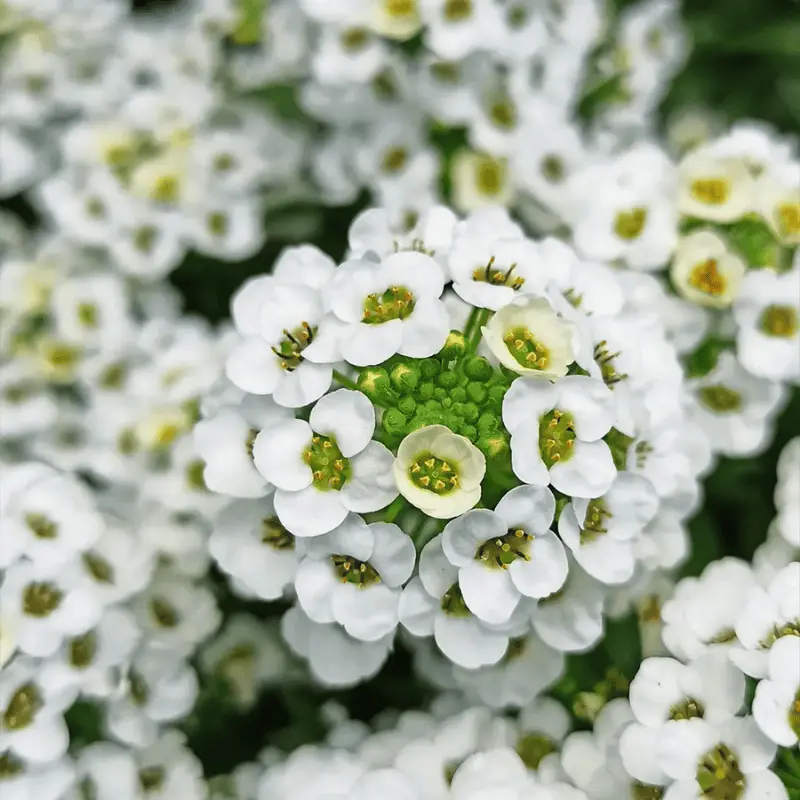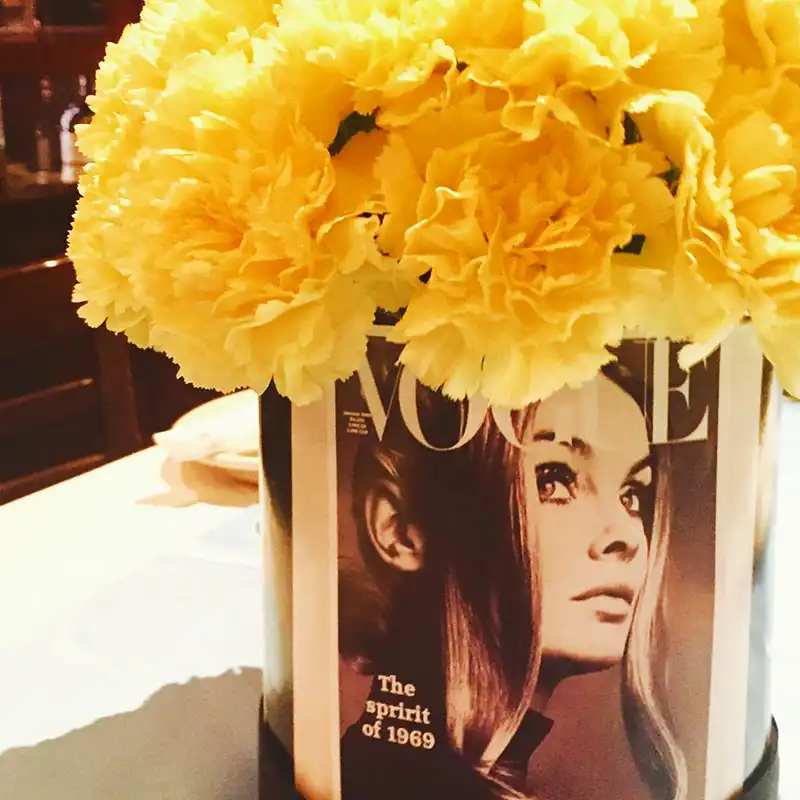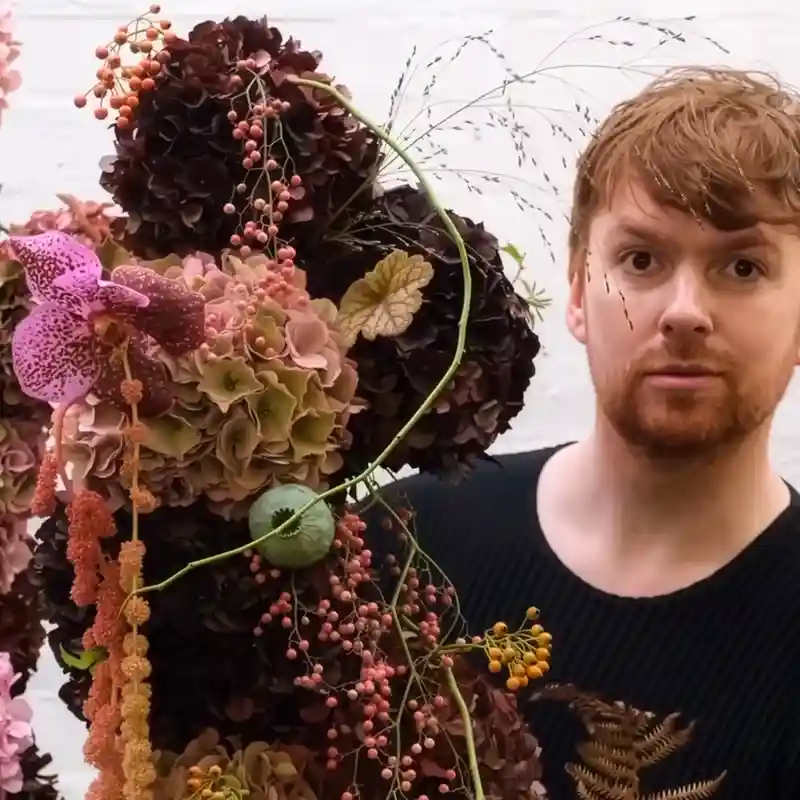Just as a coin has two sides, so does the Hydrangea flower - it flaunts both a solid and a classic face. A flower from the same plant can look completely different depending on the seasons. This is a unique beauty aspect to an overall versatile flower that designers love to work with and consumers love to put in their homes to enjoy.
Caring for cut hydrangeas, or hortensias as they are also known, isn't a complex task: if you realize that they need a lot of water half the job is done. The other half you will learn below.
Solid-Colored and Classic Hydrangea Variations
Hydrangeas originate from the area southern to eastern Asia and the Americas but are now grown all over the world in greenhouses and gardens too.
Don't you just love hydrangea's wide variety of shapes and colors? They are a gem in so many gardens all over the world and the eyecatcher in any floral arrangement for so many big and small occasions. Fresh and classic hydrangeas are perfect as wedding flowers.


There are two types of hydrangea, the spring/summer variation and the classic variation, which blooms from summer through to autumn. If you treat them right, hortensias are very rewarding flowers and they can last for over three weeks in an arrangement or a bouquet.
Solid-Colored Hydrangeas
The hydrangeas that are available in spring/summer are mostly uniform and solid in color and are not left on the plant to mature. This means that they are harvested when fully opened. These solid colors mostly have quite soft tones, like soft pink, light blue, green, white, lilac, and some two-tones.
Classic Hydrangeas
The classic variation, available in summer and autumn, can even last for months. These flowers change color and become papery. When you see a classic variety you immediately know why they are called 'classic'. Their colors have this antique look, with hues in multi-tones, making them a feast for the eye. These classic hydrangeas keep their main name, added with the word 'classic', so a solid Hydrangea Candy becomes Hydrangea Candy Classic.

Photo by @pieter_kolk_hydrangea.
Greenhouses and Gardens
Hydrangea cut flowers for consumer use are produced in greenhouses, and their peak production is in spring until late fall. The growing season for hydrangeas in gardens varies per climate region, in some parts of the world, they can even grow year-round. Outdoor-grown Hydrangeas sometimes have a very wooden stem end. In case the flower starts to wilt, cut off that part of the stem.
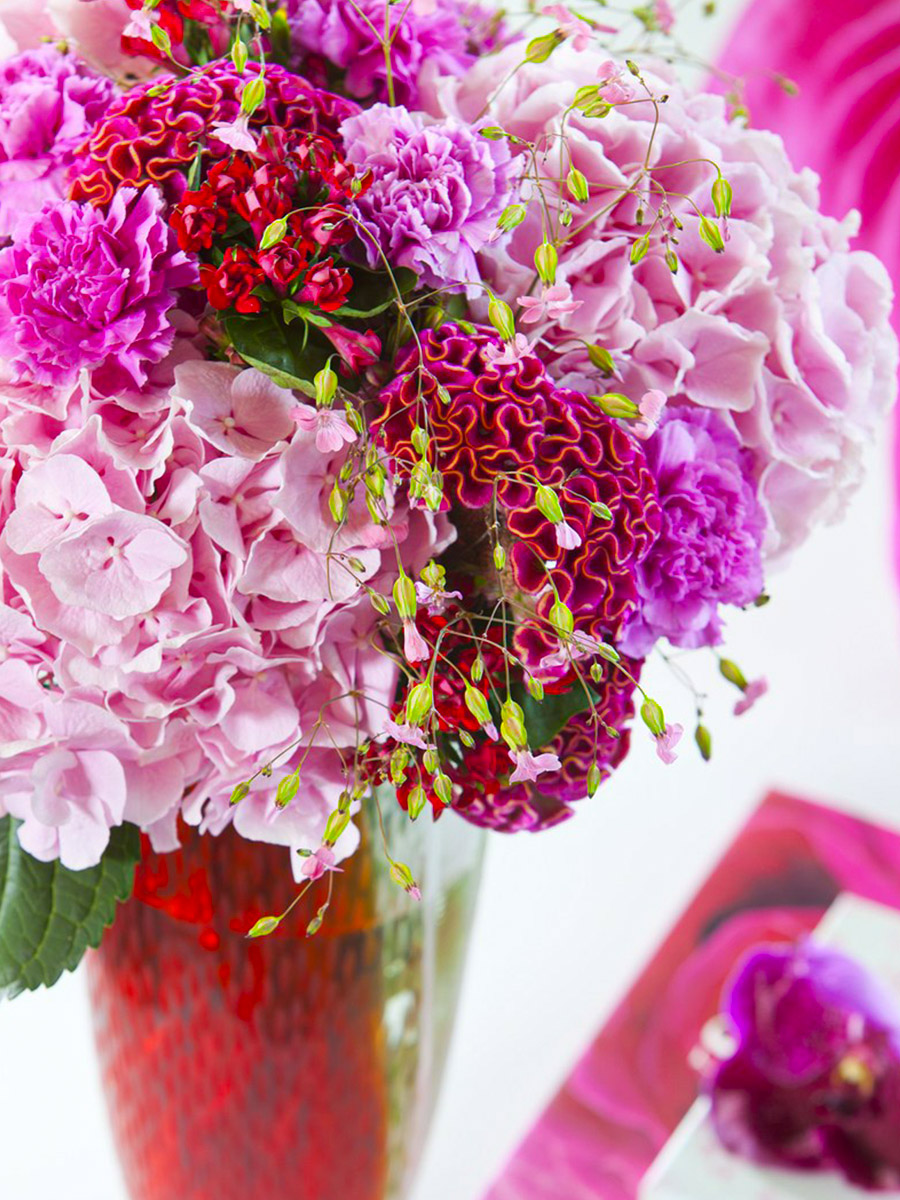
Pink hydrangeas can get a blue tinge when you use a post-harvest product containing aluminum sulfate. White flowers can morph into classic, revealing a pink or blue color for either purple classic or red classic. Therefore make sure you use clear flower food or conditioners like Chrysal Professional 2 for the storage period and Chrysal Syringa (only available in the Netherlands), Chrysal Universal flower food, or Chrysal Professional 3 for the consumer phase
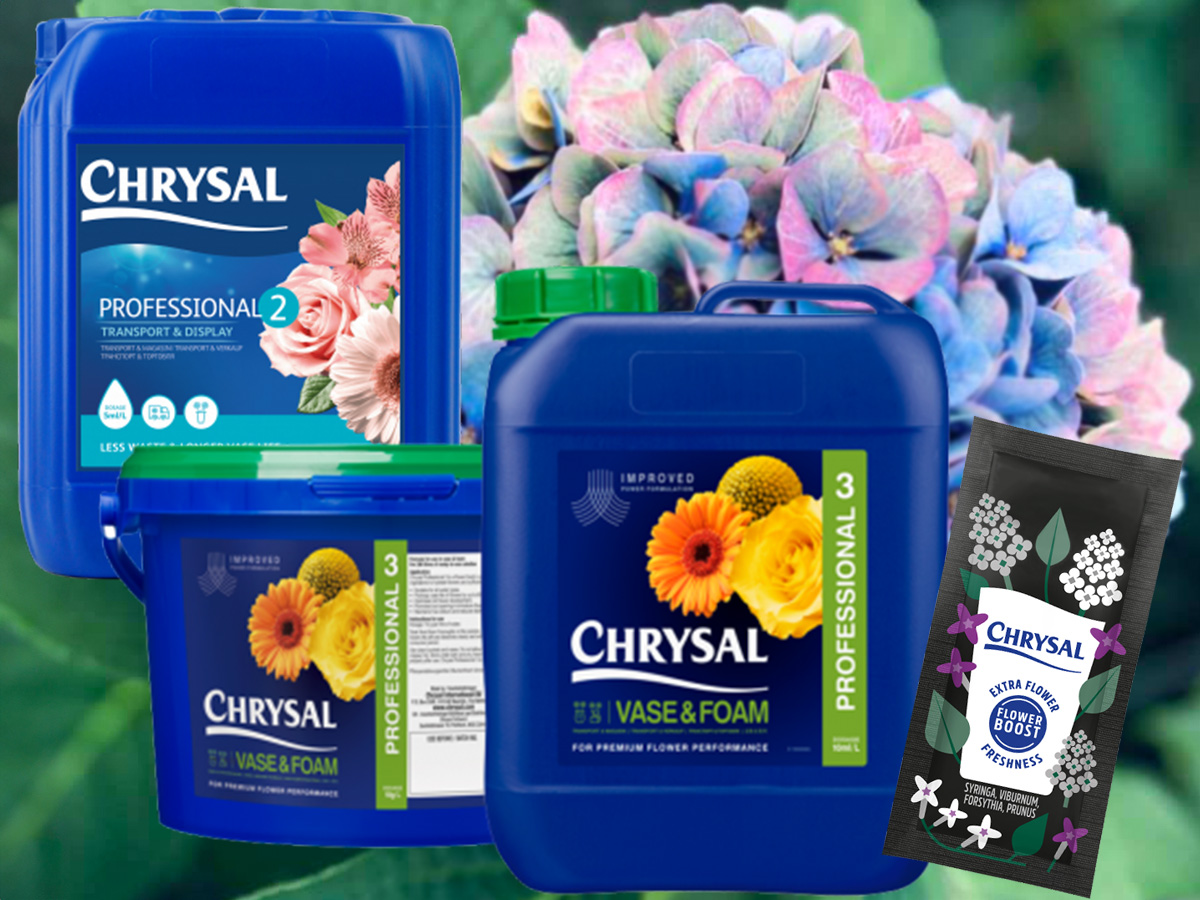
Tips From Hydrangea Grower Pieter Kolk
Pieter Kolk is a renowned Dutch grower of top-notch cut hydrangeas. Not only traders but also famous designers, like Katya Hutter, visit this grower to get the finest flowers for their projects. So, when it comes to getting the most out of hortensias Pieter is definitely the one you want to talk to.
Pieter:
"To get the best quality of hydrangeas from here to my customers I mainly use Chrysal RVB. In every test I perform, this agent comes out as the best solution. It gives the flower a better shelf life for the florist and a better vase life for the end consumer.
Next to Chrysal I always advise consumers to first cut off a bit of the hortensias before they're put in a vase. Use a clean vase! And add a bit of syringa food. That works best for hortensias."
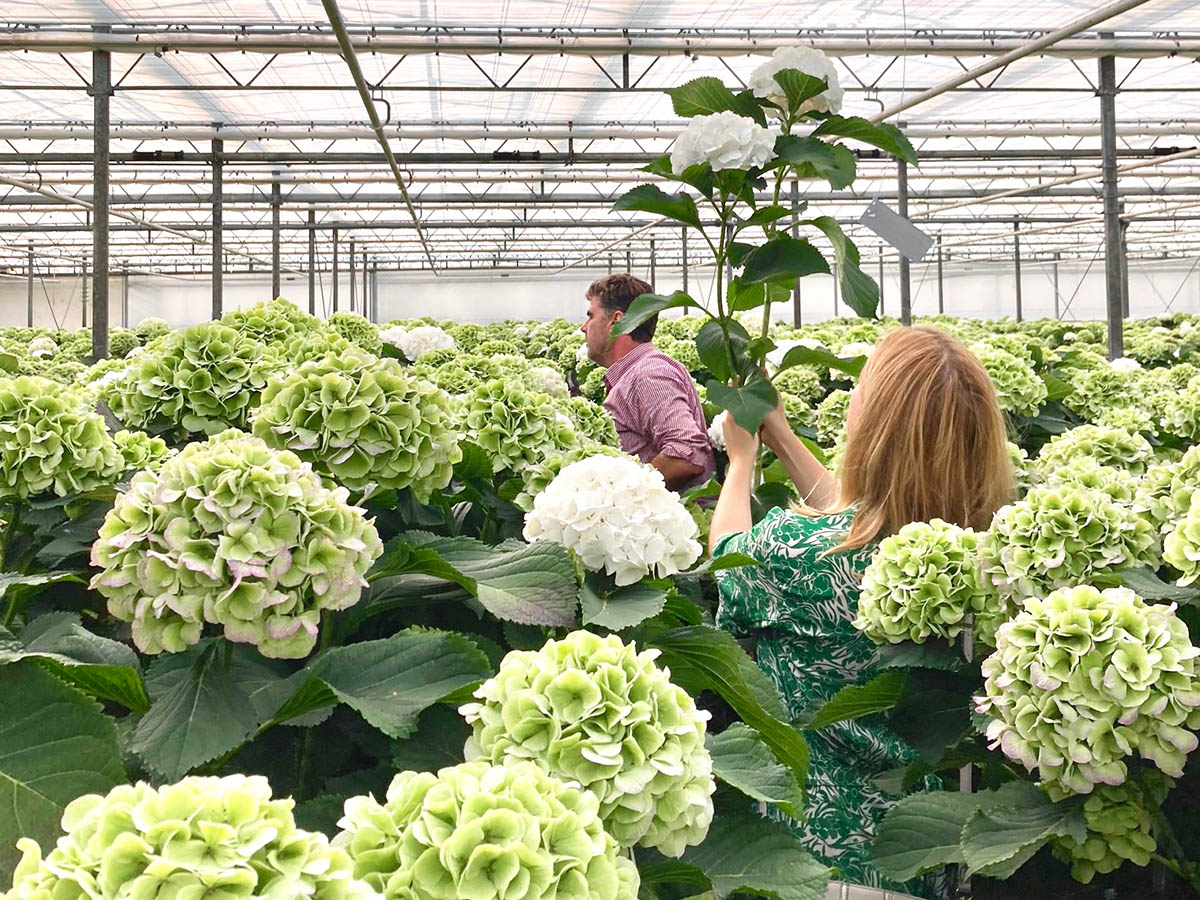
Photo courtesy of Katya Hutter Floral Design.
Hydrangea Care Tips for Florists
Hydrangea is derived from Greek and means ‘water vessel’. So, if you want to remember one thing: In the word 'hydrangea' is hidden the word 'hydrate'. Hydrangeas are very energetic plants, they work hard to maintain color and strength, to show you their beauty. Just like humans that work hard, they have very strong transpiration. Therefore, they have a high need for water.
Due to the enormous flower surface and thinness of their petals, the flower will wilt if there is not enough liquid available. If this happens, cut off about 2-5 cm of the stem with a sharp knife and place the flower in cool, fresh water with Chrysal Syringa flower food. This solution quickly hydrates the flower and boosts the energy level of the flower, which is vital for good vase life.
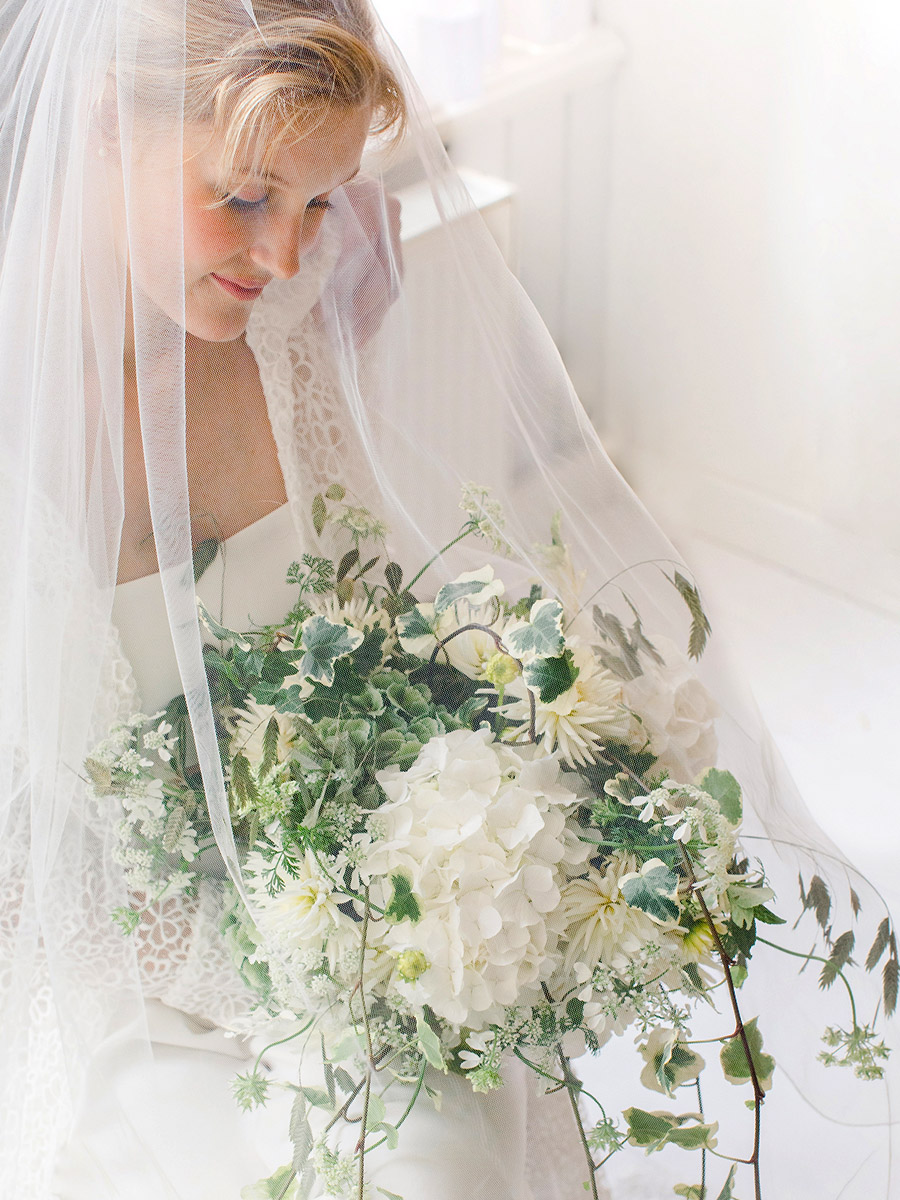
Photo by Erdinç Çatras from Olive Wedding.
Hydrangea Care Tips for Consumers
Cut 2-5 cm off the stem with a clean, sharp knife or secateurs. Hydrangeas live up to their name so they need a lot of water. Be sure to keep an eye on the water level and top up when needed.
When the flower starts to wilt, cut off 2-5 cm again and let the flowers regenerate with warm water and flower food. Use Chrysal Syringa flower food to enjoy your hydrangeas the longest.
Keep the flowers away from draft, heat, and direct sunlight.
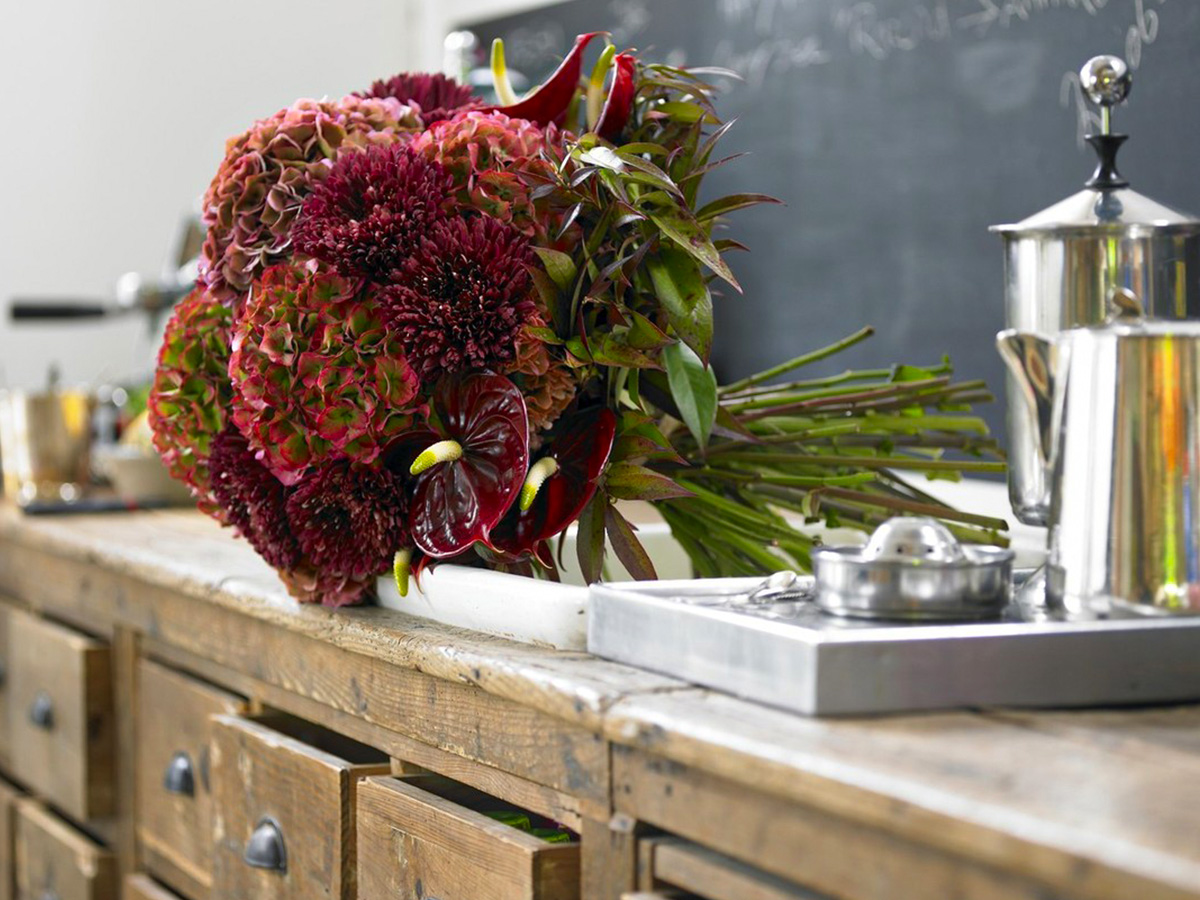
Hydrangeas Happily Ever After
If you still cannot get enough of your hortensias... just preserve them! The classic hydrangeas are perfect for preservation. Just try it, and be one of the millions of flower enthusiasts to create your own everlasting dried flowers that live happily ever after.
If you feel like reading on a bit... Here are more tips about how to get more out of your beautiful hydrangeas.
Header image by @hydrangea_world.

